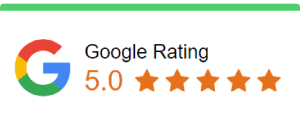Launching a startup is like setting sail on uncharted waters. You have a bold idea, a dedicated team, and a vision to disrupt the market. But how do you ensure your startup stands out in a crowded digital landscape? The answer lies in a well-crafted content strategy. A solid content strategy not only helps establish your brand but also drives growth and customer engagement. In this article, we’ll walk you through an 8-stage content strategy blueprint tailored specifically for startups, guiding you from idea to execution.

Stage 1: Understanding the Customer Journey
Before diving into content creation, it’s crucial to understand the paths your potential customers take. Traditionally, the customer journey includes stages like awareness, consideration, and purchase. However, in the digital age, we must also consider the search journey—how customers interact with content as they search for solutions.
By aligning your content with both the customer journey and search intent, you create a seamless experience that guides potential customers from discovery to decision. For example, awareness-stage content should not only introduce your brand but also be optimized for search terms that potential customers might use.
Stage 2: Goal Setting
Once you understand your audience’s journey, it’s time to set clear goals for your content strategy. This involves asking critical questions: What niche does your startup occupy? How aware is your target market of your product or service? What are your business objectives—are you looking to increase brand awareness, generate leads, or drive sales?
Setting specific, measurable goals will help you track progress and adjust your strategy as needed. For instance, if your goal is to generate leads, you might focus on creating high-quality, gated content that captures user information.
Stage 3: Conducting a Content Audit
If your startup has already begun producing content, a content audit is essential. This involves reviewing all existing content to assess its performance, identify gaps, and determine areas for improvement. Are certain blog posts underperforming? Do some pages have high bounce rates?
By analyzing what’s working and what’s not, you can optimize your existing content and plan future content that better meets your audience’s needs. This stage is also a great time to identify technical issues, such as broken links or poor internal linking, that might be hindering your content’s performance.
Stage 4: Performing a Content Gap Analysis
A content gap analysis helps you identify the differences between the content you have and the content your audience is searching for. This analysis is particularly useful when assessing your competitors. What keywords are they ranking for that you aren’t? What topics are they covering that you haven’t touched on?
By identifying these gaps, you can create content that fills them, positioning your startup as a leader in your niche. For example, if a competitor ranks for a key industry term, you can create a more comprehensive guide on that topic to attract their audience.
Stage 5: Developing Buyer Personas
Your content strategy should be built around the people you want to reach—your buyer personas. These are semi-fictional representations of your ideal customers based on market research and real data about your existing customers.
Creating detailed buyer personas involves understanding demographics, job roles, pain points, and buying behavior. Once you have these personas, you can tailor your content to address their specific needs and challenges. For example, if one of your personas is a busy professional looking for efficiency solutions, your content could focus on time-saving tips and product demos.
Stage 6: Building Topic Clusters
Topic clusters are groups of related content that together cover a broad subject area. This approach helps improve your website’s SEO by showing search engines that your site is an authority on specific topics.
Start by identifying a core topic that’s relevant to your audience and business goals. Then, create content that explores subtopics in depth, linking each piece back to the main topic. Over time, these clusters will not only improve your search rankings but also provide your audience with valuable, comprehensive resources.
Stage 7: Conducting Keyword Research
Keyword research is the backbone of any content strategy. It starts with identifying seed keywords—broad terms related to your business. From there, you expand into related keywords, synonyms, and long-tail phrases.
This research helps you understand what your audience is searching for and allows you to create content that meets their needs. For example, if your startup offers a project management tool, your seed keyword might be “project management,” with related keywords like “task management” and “team collaboration.”
Stage 8: Executing the Content Project
Now that your strategy is in place, it’s time to execute. This involves creating a detailed content calendar, assigning tasks, and setting deadlines. Consistency is key, so ensure that all content aligns with your brand voice and business goals.
Execution also includes ongoing measurement and iteration. Use analytics tools to track the performance of your content. Are you meeting your goals? If not, don’t hesitate to tweak your strategy. For instance, if blog posts aren’t driving the expected traffic, you might need to revisit your keyword strategy or improve your content’s readability.
Balancing Organic and Paid Strategies

As a startup, your budget is likely tight, so it’s important to find the right balance between organic and paid strategies. Organic content builds long-term brand equity, while paid content can provide quick wins. The key is to use paid campaigns strategically to support your organic efforts. For example, you might use paid ads to promote a high-performing piece of organic content, boosting its reach.
Ensuring Content Alignment with Business Goals
Your content strategy should be a living document that evolves with your business. Regularly review your content’s performance and adjust your strategy to ensure it continues to align with your business objectives. For instance, as your startup grows, your focus might shift from brand awareness to lead generation, requiring a corresponding shift in your content strategy.
Tools and Resources for Content Strategy
There are many tools available to help you at each stage of your content strategy. For example, tools like Google Analytics and SEMrush can help with keyword research and content gap analysis, while platforms like Trello or Asana can assist with project management.
Startups should also consider the benefits of both free and paid tools. Free tools can be a great way to get started, but as your content strategy matures, investing in more advanced tools can offer deeper insights and greater efficiency.
The Role of AI in Content Strategy
AI can be a game-changer for startups, especially when it comes to content creation and strategy. Tools like ChatGPT can assist with brainstorming content ideas, while AI-powered SEO tools can help optimize your content for search engines.
By integrating AI into your content strategy, you can streamline your processes and create more personalized content at scale. For example, AI can analyze large sets of data to identify trends and preferences among your target audience, allowing you to create content that resonates more effectively.
Common Challenges and How to Overcome Them
Content strategy for startups is not without its challenges. Common obstacles include limited resources, high competition, and the ever-changing digital landscape. However, these challenges can be overcome with careful planning and flexibility.
For instance, if you’re struggling with content creation due to limited resources, consider repurposing existing content or leveraging user-generated content. If competition is fierce, focus on niche topics where you can establish authority.
Conclusion
A well-executed content strategy is vital for the success of any startup. By following this 8-stage blueprint, you can create a strategy that not only establishes your brand but also drives sustained growth. Remember, content strategy is a journey, not a destination—so be prepared to adapt and evolve as your startup grows.
FAQs
1. How long does it take to implement a content strategy for a startup?
- Implementation time varies, but a comprehensive content strategy can take anywhere from 3 to 6 months to fully execute.
2. What is the most important stage in the content strategy process?
- While all stages are important, understanding the customer journey is crucial as it lays the foundation for the entire strategy.
3. Can a content strategy be successful without paid advertising?
- Yes, a well-executed organic content strategy can drive significant results, though paid advertising can help amplify your reach.
4. How often should a startup revisit its content strategy?
- Startups should review and adjust their content strategy every 3 to 6 months to ensure it remains aligned with business goals.
5. What are the key metrics to measure content strategy success?
- Key metrics include website traffic, engagement rates, conversion rates, and keyword rankings.



